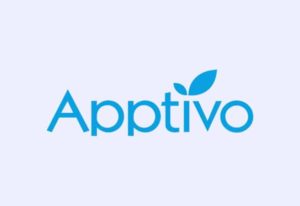- Scrum boards
- Kanban boards
- Roadmaps
- Agile reporting
- Code connection for issues
- Project automation
- Audit logs
1. Scrum boards
The Scrum technique is a popular agile process framework widely used by various teams, ranging from software and marketing teams to business and HR teams. A team that believes in Scrum as an effective tool to implement agile methodologies could use Jira because their Scrum boards are the visual manifestation of the idea of Scrum. The boards help in organizing tasks of different users in the team effectively and hence enhancing the team’s performance.
These Scrum boards are not just simple task boards but have much more in store. For example, any team member can access these Scrum boards at any time. As a result, this increases the transparency within the team and improves communication quality. The Scrum board has a sprint timeframe, which ensures that it keeps the essence of agile working in place. Additionally, the time frame makes sure that the project has iterative developments.
2. Kanban boards
Kanban works differently from Scrum but is also widely used by several teams. In essence, Kanban focuses on visualizing the work and limiting the work at hand, which in turn maximizes team efficiency. This method focuses on reducing the total amount of time taken to finish the task given or even the project as such. Kanban boards make this process comfortable for managers and their subordinates alike.
Kanban boards have visual signals in the form of cards, sticky notes, or similar things. The boards are unique because they limit the number of these visual signals in one column with their Work-In-Progress (WIP) limits. This feature makes sure that a particular column or workflow is not too crowded, and thus increases the efficiency of the team. The idea of Kanban boards has been in usage for a very long time, though it is common for people in its physical form. The fact that this idea is available digitally to a large team makes things all the more convenient.
3. Roadmaps
Every team is required to prepare documentations called roadmaps, which ensures that everyone working in the team is completely aware of the current status of the project. Additionally, roadmaps help the user get work done more efficiently. A document of such importance, however, can be a pain to maintain, and using spreadsheets to maintain roadmaps can be extremely tedious. As a result, it also often ends up being misunderstood.
Jira Roadmaps, however, provides a possible solution to this problem through their easy to use and easy to understand user interface. Using the same software as the rest of the project to also create a timeline for the roadmap seems like the wisest and most convenient choice. Further, maintaining all documentation in a single platform improves ease of access for all team members. Additionally, the optimized roadmaps can be used not just to track ongoing and completed tasks, but also to set targets for the future.
4. Agile reporting
All teams that work with agile methodologies need to make sure that they do so at all times without deviation. Even though a team aims for such a mechanism, it is easy to digress from agile working. Jira offers a variety of tools to generate reports on the agile mechanism and the functioning of the team in general. Scrum boards and Kanban boards are the most prominent examples of agile reporting tools because they provide a platform for the team to make sure they are on the right track of workflow. Additionally, tools like the control chart tell the team about the cycle time for each iteration. It can be extended to the project as a whole or each version.
Furthermore, other tools like the cumulative flow chart give an area chart to show the work in progress of a version or a product. Moreover, burndown charts show a comparison of the actual and estimated time to complete a task, a version, or a product. The value completed in each sprint of a version can be viewed through a velocity chart. Apart from these tools, the sprint report gives the list of issues in each sprint, which can be useful for improvement meetings.
5. Code connection for issues
Every project done has a set of actions or tasks that need to be executed in a particular fashion for the best and desired output. These tasks, otherwise called as issues in Jira, are essential for the working of any tool in the software. Users create such important elements regularly and, additionally, expect this process to be as easy as possible. However, there are many ways to develop such issues. An in-code link and a VS (Visual Studio) code (either manually or through context) are the known methods. Users can also view and edit these issues through the platforms, as mentioned above.
6. Project automation
Several issues or tasks, while creating a product, tend to be repetitive and monotonous. This work, however, is time-consuming if a user makes several similar iterations for a particular project or issue. The redundancy in such cases needs to be reduced. Hence, automating these parts of the process is helpful. Automation helps with better resource utilization and increased efficiency, and Jira has made this tool easily accessible. Triggering an automation rule doesn’t require any code and can be done with only a few clicks. Most importantly, the team has access to this feature up to any scale, so that the team can work smarter instead of harder.
7. Audit logs
Jira gives its users the feature of an audit log, covering an array of events. Some of them are project changes, permission changes, workflow changes, notification changes, screen changes, and custom field changes.



